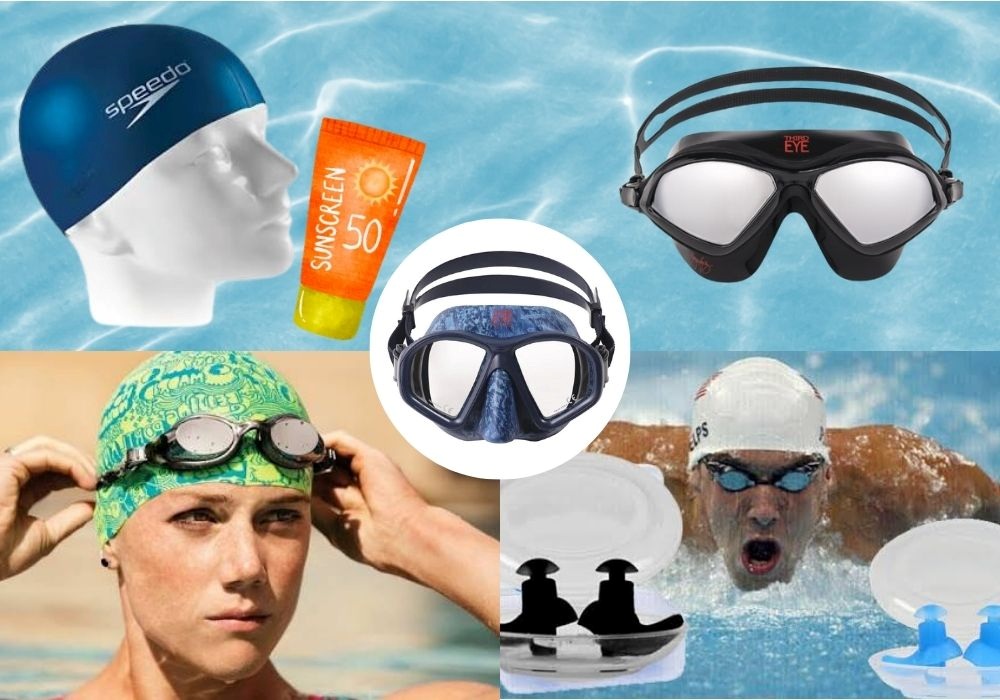Pool Training: Everything You Need to Know Before You Dive In
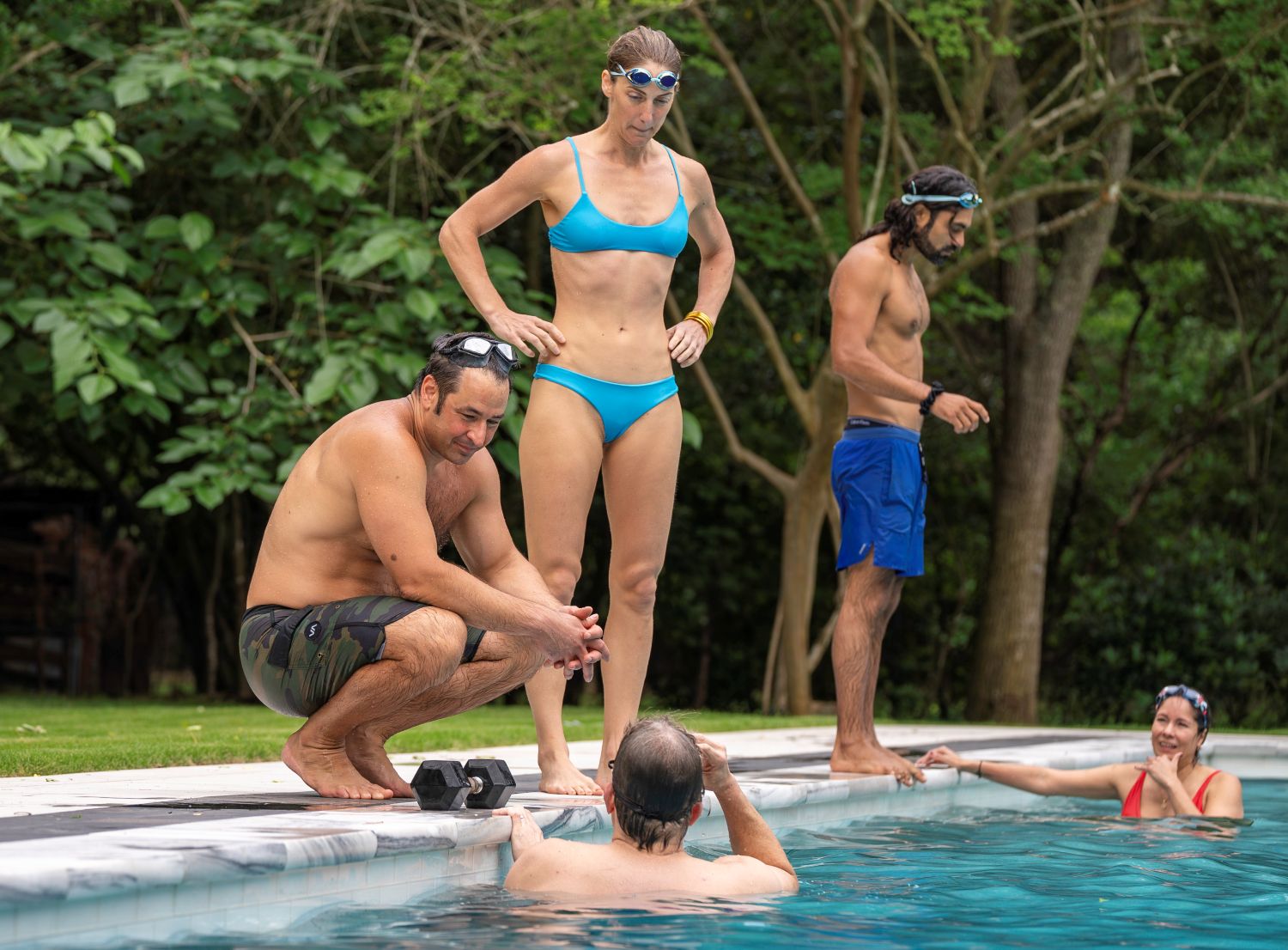
Curious about training in the water?
Looking for an amazing workout that’s perfect for longevity because it produces amazing results while being gentle on the body?
Want to build mental resilience and strength?
Today’s article shares everything you need to get started!
Table of Contents
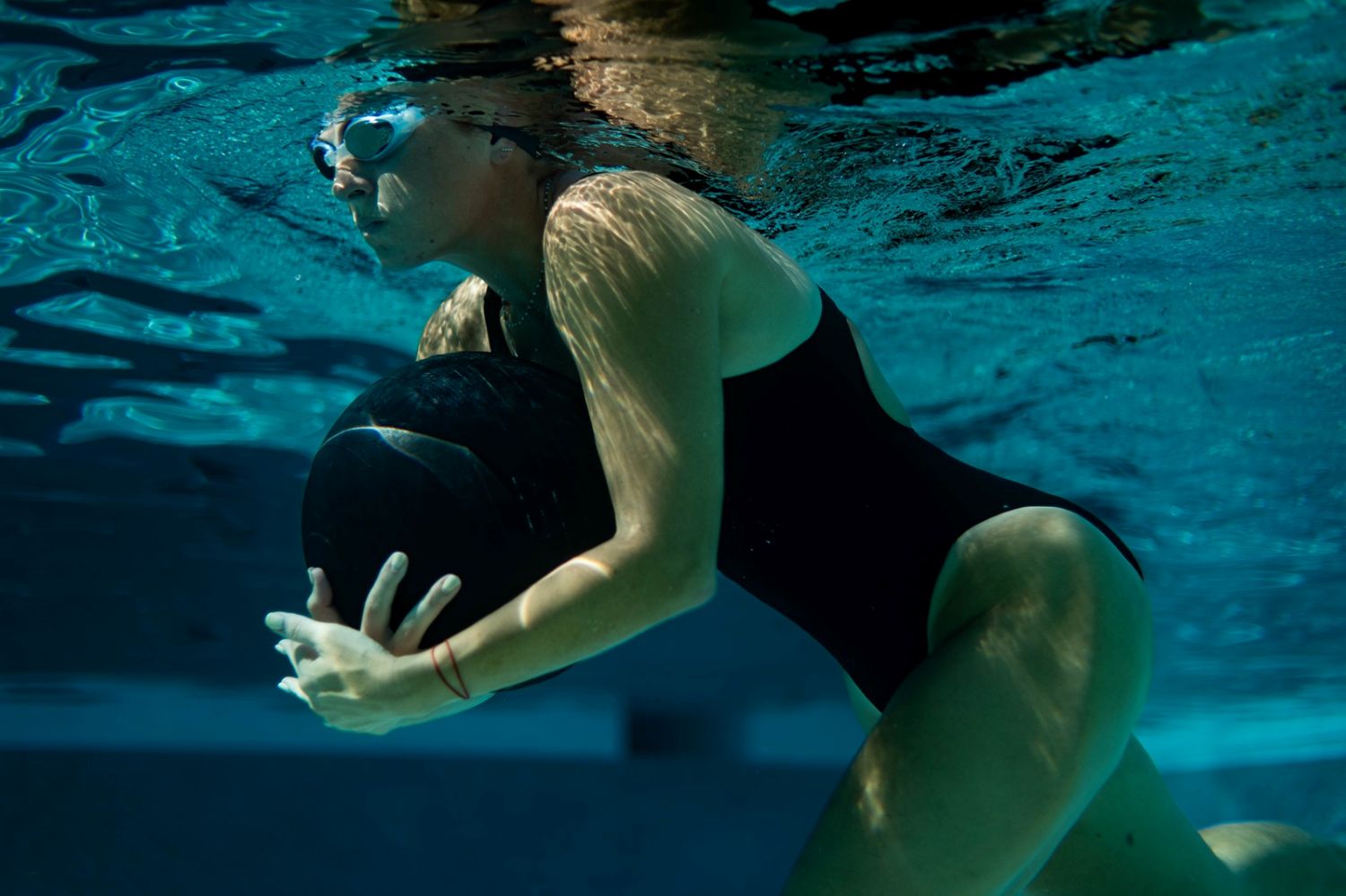
What Pool Training Is (Context & Background)
When most people hear “pool workout,” they picture swimming laps or maybe a water aerobics class.
That’s NOT what we’re talking about here. No water aerobics, no hours of repetitive lap swimming.
Pool training (a.k.a. Water training) is something entirely different. Think of it as a hybrid between strength training, cardio conditioning, mindset training and breathwork — all done in the water.
The pool is a great place to train because it’s accessible, safe, and controlled. You don’t have to worry about waves or currents like you would in the ocean, but many of the same principles apply to lakes, rivers, or surf.
The benefits are what make people stick with it:
- It’s low impact, so your joints don’t take the pounding they do on land.
- It builds explosiveness (try jumping out of the water with a dumbbell and you’ll see what I mean).
- It sharpens breath control and mental focus — you can’t fake calmness underwater.
- And it works both your muscles and cardiovascular system at the same time.
For many people, it ends up being the rare workout that challenges both body and mind in equal measure.
Benefits of Pool Training
I like to tell people that pool training is a bit like “strength training meets meditation.” You’ll push your body harder than you thought possible, but because you’re immersed in water, you’ll also feel this deep sense of calm.
Some benefits include:
- Total-body conditioning. Movements like weighted carries, underwater squats, and explosive jumps engage muscles you didn’t even know you had.
- Serious cardio. Moving against water resistance pushes your heart and lungs harder than running on a treadmill.
- Better breath control. Holding your breath safely while moving underwater builds CO₂ tolerance, which carries over into everything from endurance sports to stress management in everyday life.
- Calorie burn without strain. The water cools you down and regulates your body temperature, so you can train longer without overheating.
- Mental resilience. That little moment of discomfort underwater — when your brain tells you to panic — becomes a training ground for building calm under stress.
- Joint-friendly. The water cushions your body, so even explosive movements are low-impact.
And let’s not forget one of the biggest reasons people keep coming back: it’s fun. There’s something about the water that we’re primarily conditioned to enjoy. Plus, water allows us to move freely in three dimensions which opens up all kinds of avenues for play.
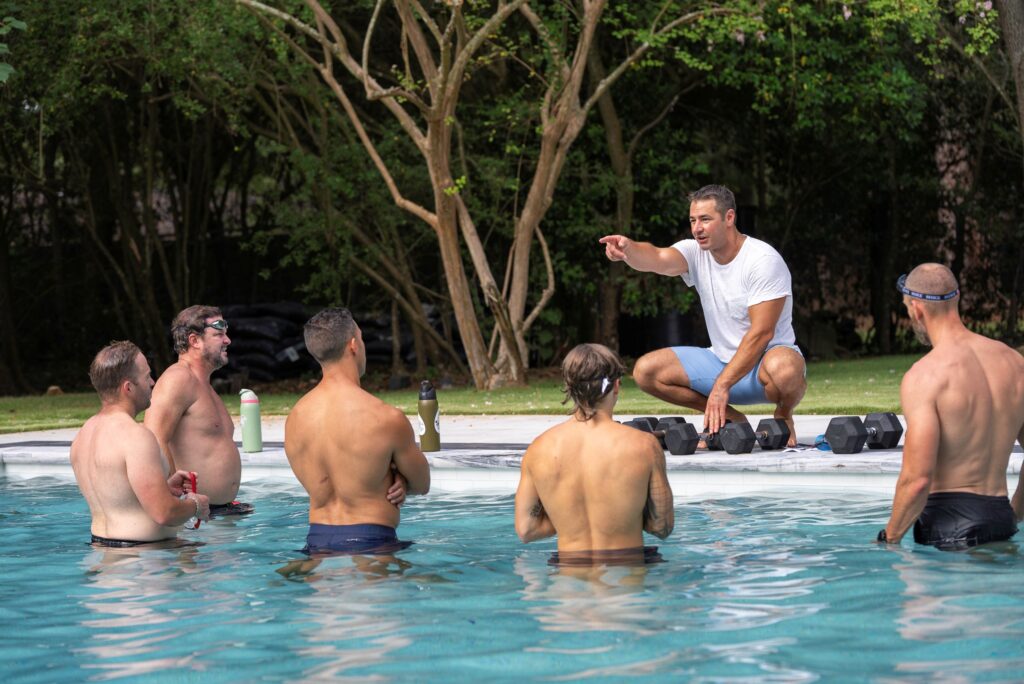
Where Pool Training Doesn’t Make Sense
Like anything, the pool isn’t the perfect solution for everything. If your goal is to deadlift 500 pounds, you’re going to need barbells on land. And if you’re training for a specific sport — say basketball or soccer — most of your practice has to happen on the court or field. The pool is a supplement, not a replacement.
Looking for other joint-friendly longevity workouts? Check out my full guide on the 7 best workouts for a healthy life after 40.
Who Can Train in the Pool?
Pretty much anyone. I’ve trained kids as young as 10 and adults in their 70s. If you’re comfortable putting your face in the water and willing to try something new, you can start.
Who Should Not Train in the Pool
The biggest road blocks to training in the pool are the same ones that would keep you away from other workouts.
- Sick. If you’re feeling sick, skip pool training and your other workouts and let your body rest. It needs it.
- Injured. Injuries around your shoulders, hips, and knees that cause pain when you move usually mean you should let your body recover first.
- Open wounds. If you’ve got an open wound, sit this one out until you’ve healed. A good example is recovery post surgery. The water can cause an infection.
- Doctor’s orders. If your physician has specifically told you to avoid activity in the water, listen to that advice.
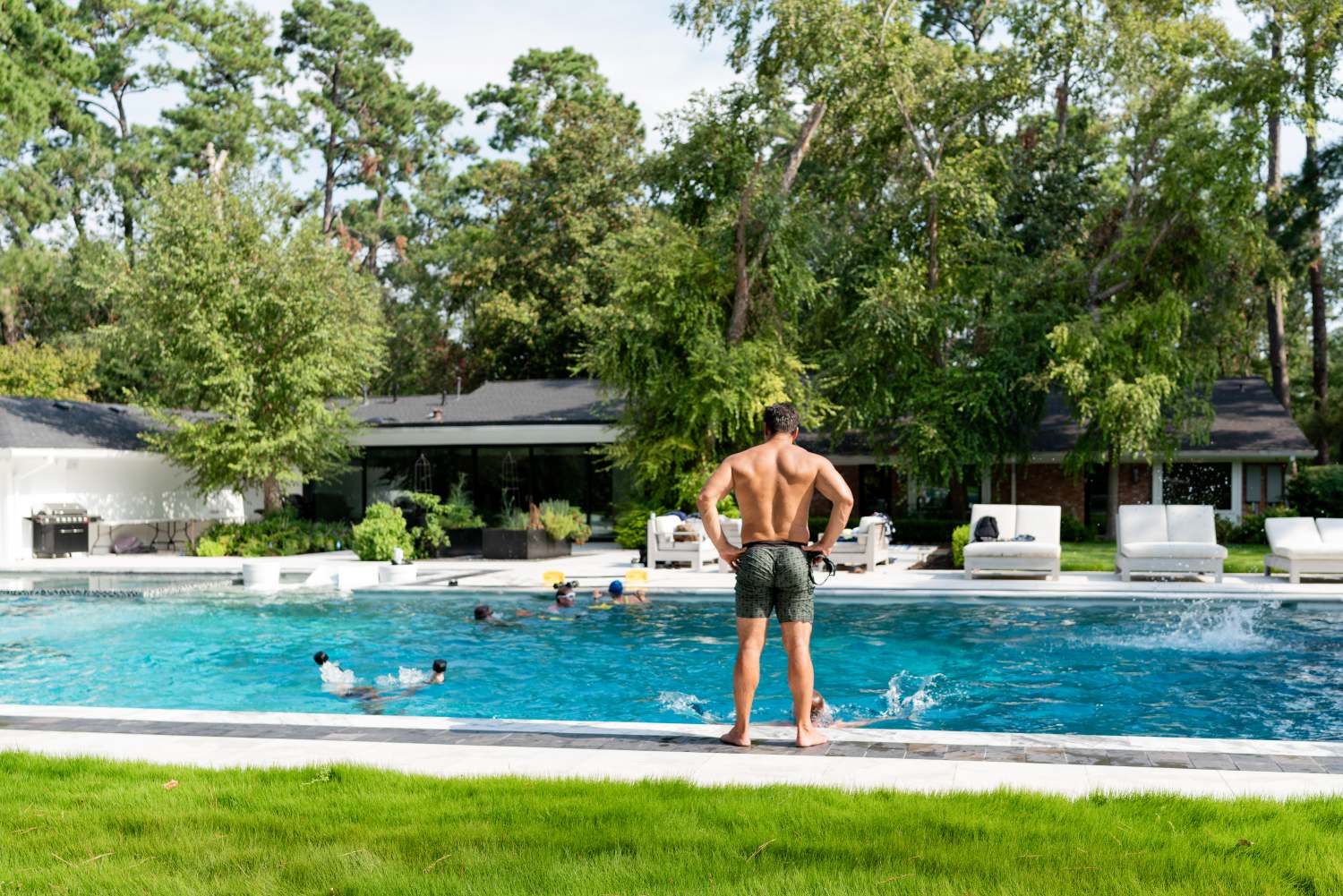
What to Expect During a Session
Wondering what to expect before, during, and after a training session? Here’s everything you need to know (plus a little extra.)
Should I Eat Before Training?
Before training, eat a light meal or snack an hour or two before training. The goal is to fuel your muscles and give you energy but not create a heavy feeling while you’re training. A few good ideas :
- Oats soaked in almond milk with banana, berries, and nuts on top and an optional sprinkle of honey.
- Peanut butter and jelly sandwich on sourdough or whole wheat bread.
- Smoothie (check out the recipe and benefits here)

How Long Does a Session Take?
Training sessions can be any length – even a quick 5 – 10 minute session can be safely structured.
My preferred format for best results is a 90 minute training session. Those 90 minutes include ~ 20 minutes of warm-up for your mind & body, ~ 60 minutes of training in the pool, and ~10 minutes of post training recovery. Here is a more detailed breakdown of my preferred 90 minute training format : :
- Breathwork on land for 5 ~ 10 minutes. Primes the respiratory system and muscles.
- Mobilize and stretch for 5 ~ 10 minutes. Safely prepare the body to work.
- Safety briefing (always, regardless of athlete level) About 1 minute.
- Water warm-up. About 2 ~ 4 minutes. Easy swimming to get the body ready and get acquainted with the water.
- Pool training with a focus on Mindset and breathwork. About 30 minutes.
- Pool training with a focus on full body strength and conditioning training. About 30 minutes.
- Recovery. About 10 minutes.
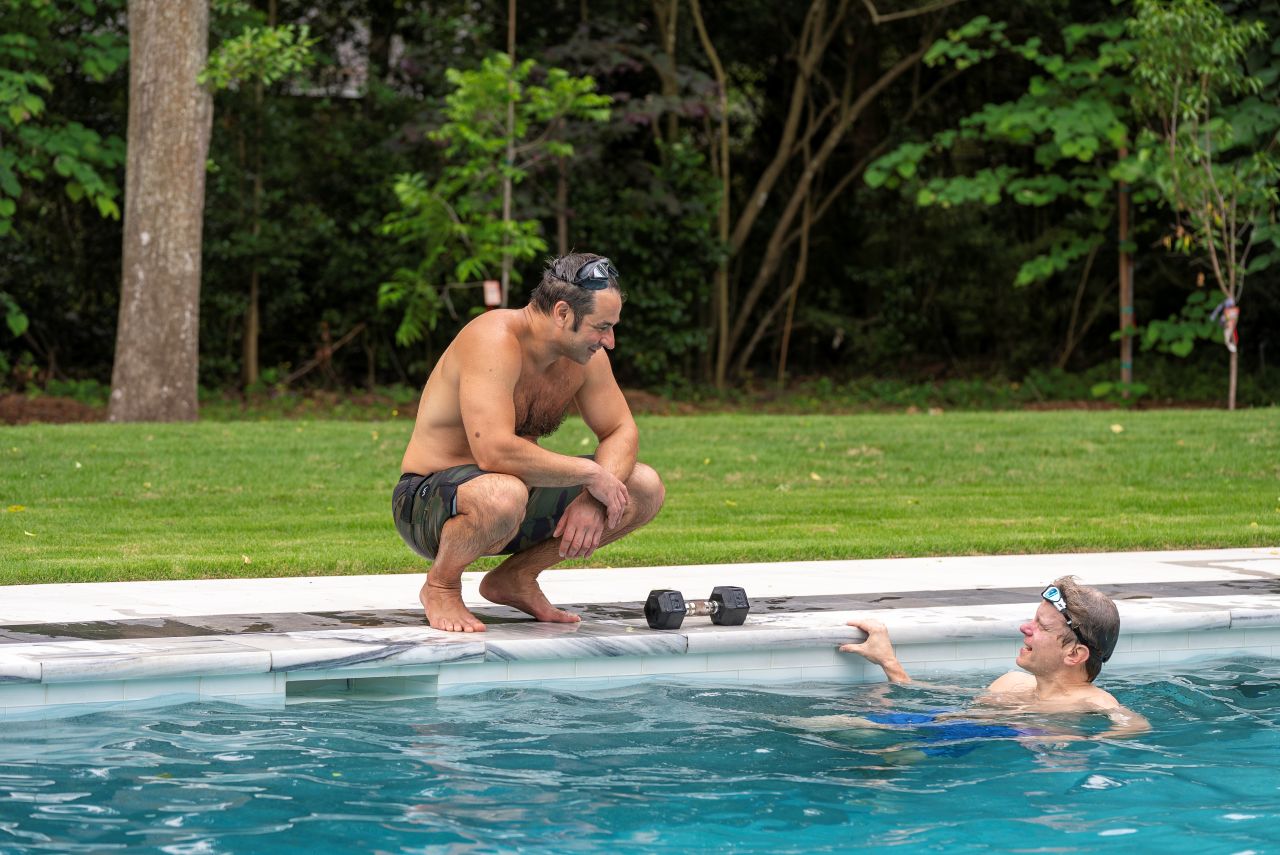
Goals For Your First Session
Everyone starts from a different level, so everyone’s goals will be different. A great goal for any level of training is to have awareness throughout the session of what’s going on in your head as you train. Are you calm? Nervous? Focused?
From that baseline, you can begin working towards shifting your mindset to stay calm and confident in more challenging situations — both in the water and in life.
And don’t worry — you’ll never be left to figure it out alone. There’s always trained supervision, and the group vibe is one of the best parts: supportive, encouraging, and a little competitive in the best way.
How Long Does It Take to Progress?
The cool thing about pool training is how fast people improve. I’ve seen people come in nervous on day one and, by the end of that first session, already surprising themselves with what they can do.
That said, the first couple of sessions are often about learning the basics — technique, breathing, and safety. By about 4 or 5 sessions, most people have built a strong foundation and start seeing real carryover into their other workouts and daily life.
Everyone’s timeline is different, and there’s no wrong pace.
Equipment Checklist – What Should You Bring With You?
Here’s a checklist of what to bring.
Absolute Essentials
- Swimsuit. Guys, avoid overly baggy trunks. Ladies, pick something secure that won’t shift around when you jump or move quickly.
- Goggles or masks. You need to be able to see underwater and eyewear makes this possible. I prefer goggles over a mask. The main advantage of a mask is preventing water from entering your nose.
Recommended
- Water bottle. Highly recommended so you can hydrate during and after training. No glass bottles, though. It’s not safe in or near the water in case it breaks.
- Towel. To dry off after you train.
- Change of clothes. You’ll thank yourself afterward.
- Sunscreen. If your skin is prone to burning, sunscreen helps. Make sure to get one that doesn’t come off easily in the water.
- Nose plug. Helps keep water out of your nose, especially if you decide on goggles instead of a mask.
- Ear plugs (optional). Helpful if you’re prone to swimmer’s ear.
- Swim cap (optional). Keeps your hair dry and out of your face.
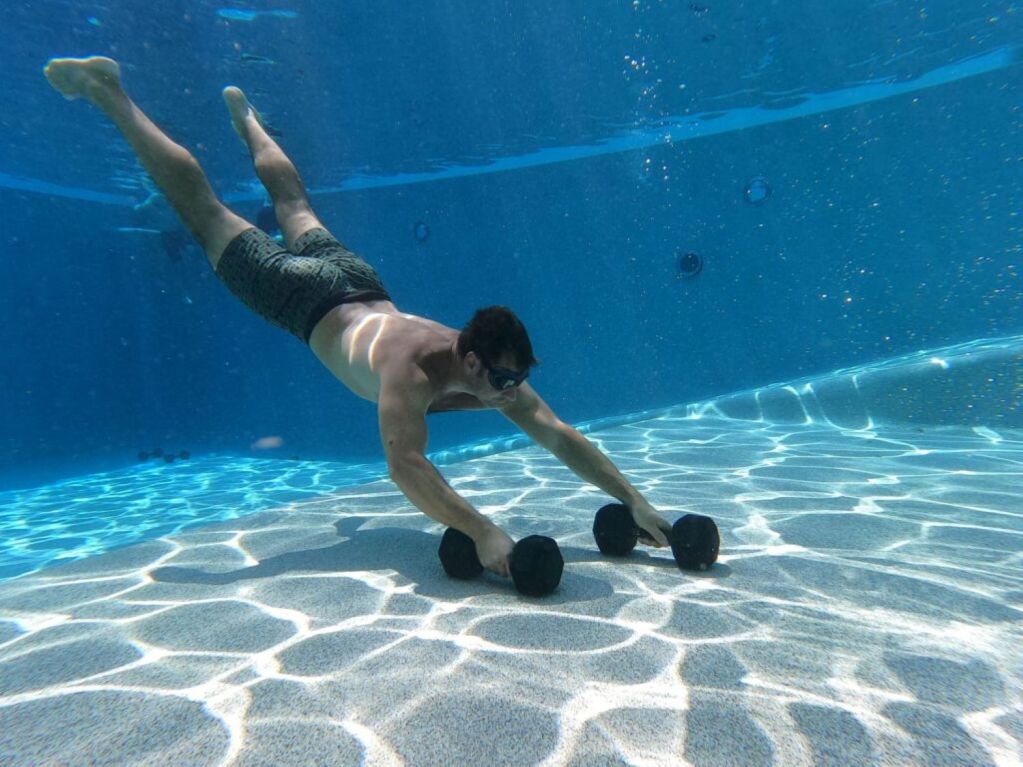
Aftercare & Recovery
After training, hydrate well and grab a light, nourishing snack. Most people feel a mix of exhilaration and calm — endorphins from the workout, plus a nervous system reset from the breathwork and immersion. Many people tell me they feel “clear-headed and centered” for the rest of the day.
FAQs & Quick Tips
Do I need to be a good swimmer?
No. You don’t need swim technique to get started — just some basic comfort in the water.
Will I be holding my breath?
Yes, but safely and with supervision. You’ll start small — literally a second or two underwater — and build from there.
Is it safe?
Absolutely. Every drill is structured, coached, and progressive.
Do I have to go into deep water?
Not at all. You can stay in the shallow end (4 feet or less of water) for the entire session and still get a highly effective training session.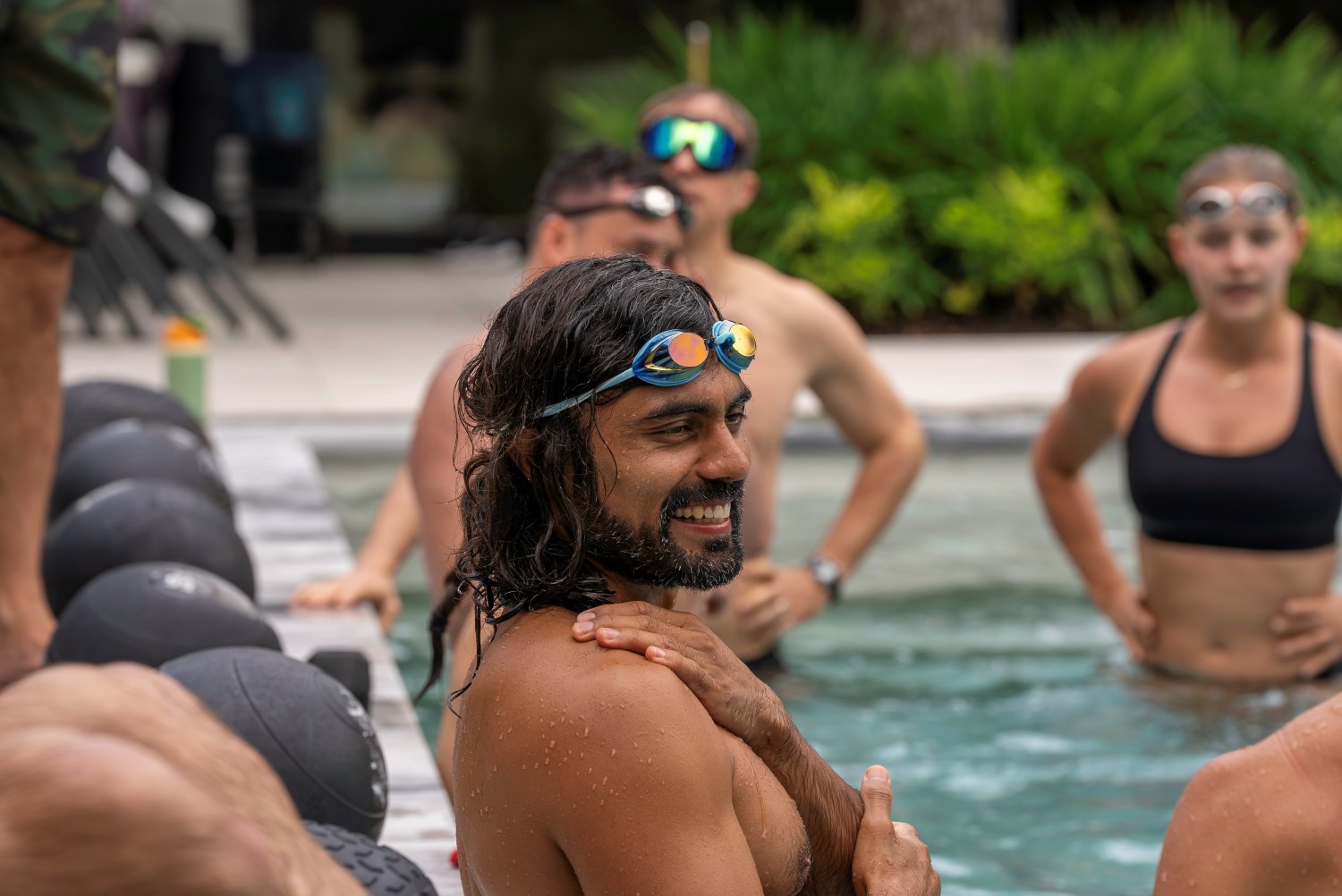
Final Thoughts
If you’re curious about trying pool training, the best thing you can do is schedule your first session! Bring your swimsuit, an open mind, and maybe a little courage. You’ll leave with a sense of accomplishment, a calmer nervous system, and probably a smile on your face.
Don’t see a time that works for you at the scheduling link? Looking to schedule a private, or maybe a small group session for your team? Fill out the form below to let me know how I can help. I’ll be in touch ASAP.

